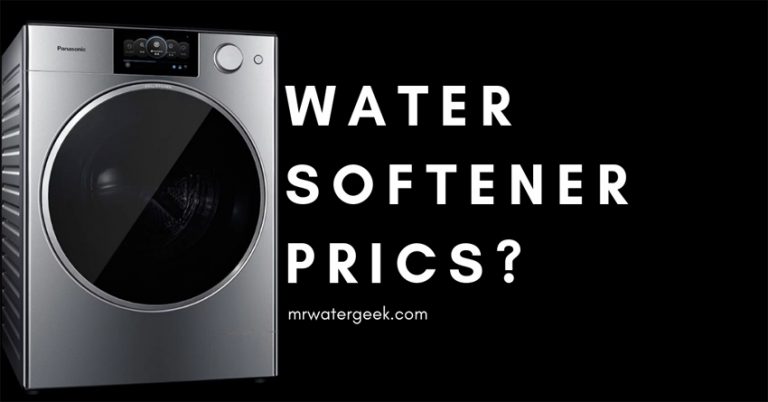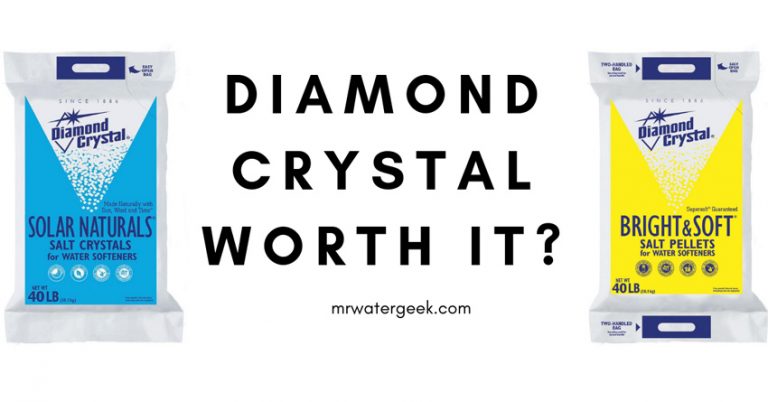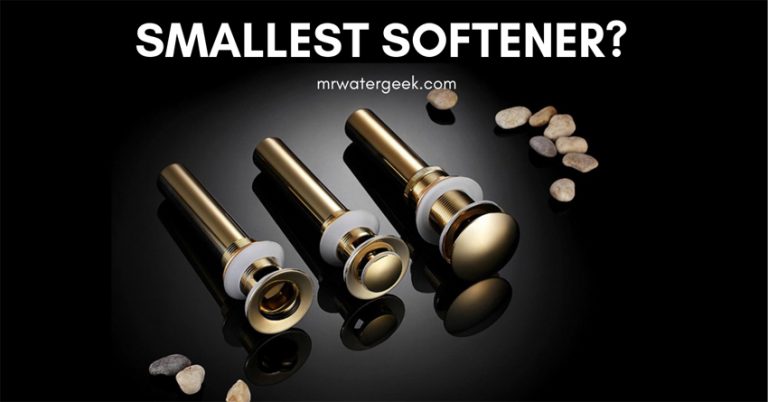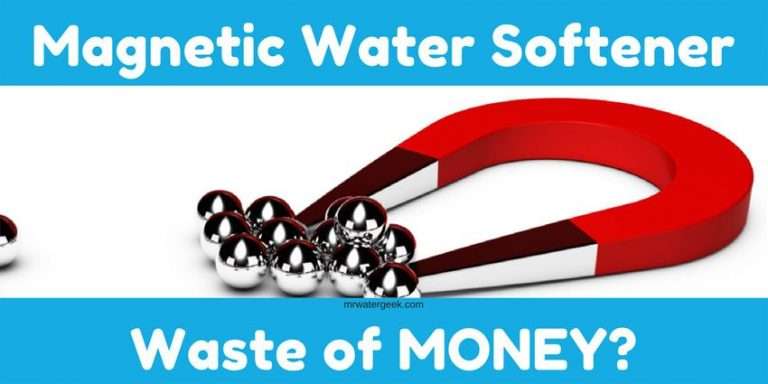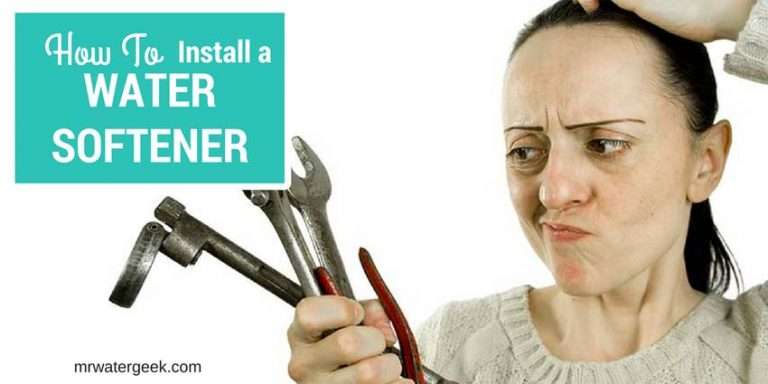Softpro vs Springwell Whole Home Softeners: Everything You NEED to Know
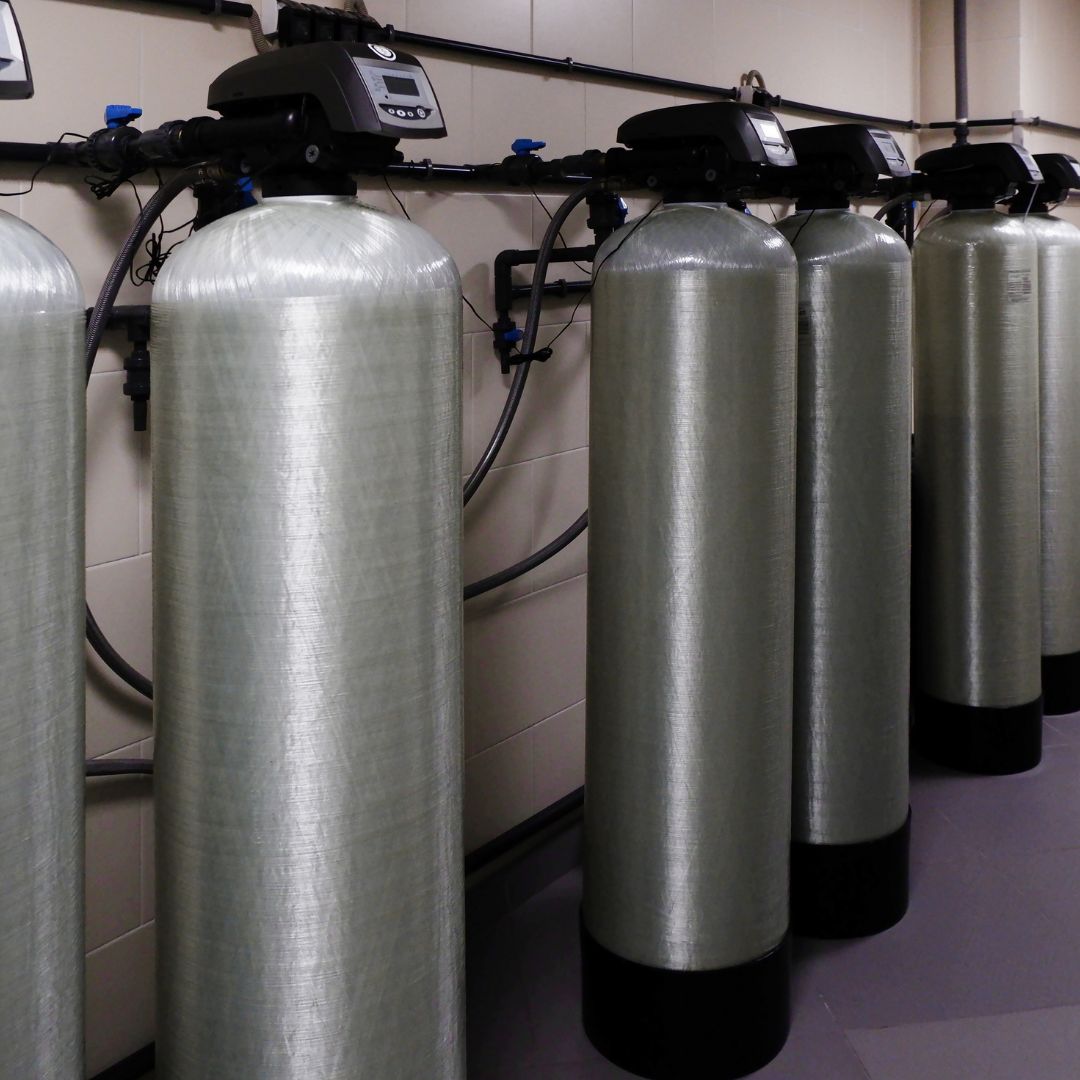
Water softeners are different from water filters and are a subset of water conditioners. A water conditioner is just a generic term for any sort of water system that is able to alter the quality of your water to improve it in some way. You can see more about these differences in my post on “water conditioner vs water softener”.
Water softeners have become a very common home appliance, especially in areas with hard water. A typical salt-based water softener works by using ion exchange resin beads to remove calcium and magnesium ions, which make water ‘hard,’ from the water supply. By reducing these minerals, a water softener provides significant benefits around the home. It prevents scale buildup that can clog pipes and reduce the life of appliances and allows soaps and detergents to clean more effectively. Plus, it leaves fixtures feeling smooth instead of gritty.
In this post, I will directly compare Softpro vs Springwell by assessing key factors like features, performance, costs and more. The goal is to help you make an informed selection of the best water softener to suit your unique needs.
I’ll start at the end by listing the key characteristics of the softeners you should be considering and a summary of how the two brands compare. I’ll dive into the details after and conclude with the same info. So if something doesn’t make sense in the section below, scroll down and it’ll likely be explained. If it isn’t and/or you’re confused about something, please submit a comment below with your question for the benefit of other readers who may have the same question instead of sending me an email/LinkedIn message.
Key Characteristics
Grains Per Gallon (gpg)
- This is the most commonly used specification used to size your water softener or conditioner. It is a measure of how much dissolved calcium carbonate is in your water. The higher the number, the harder your water.
- Another measure is water hardness, the concentration of calcium and magnesium cations (positively charged ions).
- City vs Well: You’re responsible for softening your water regardless of where you live. I’m not aware of any municipalities/water treatment centers that soften water.
Salt-Free Conditioning vs Salt-Based Softening
- I prefer salt-based softeners over salt-free conditioners, which don’t technically ‘soften’ water. I have tested both technologies side-by-side (ion-exchange vs template assisted crystallization or TAC) and I am not a fan of the salt-free tech as they’re dependent on processing already clean water and not as effective.
- The salt-free water conditioning tech we’re discussing here, TAC, essentially attempts to crystallize dissolved minerals before they can become scale in your home and harmlessly pass through your plumbing.
- TAC is a ‘green’ alternative to salt-based softening as it doesn’t require the flushing of the tank because there is no recharging.
- Great idea and they do work but not effectively.
- Other contaminants like iron and sediment in the pre-treated (influent) water affects the performance of scale reduction.
- This makes this more expensive than a salt-based softener as you’ll need to make sure those contaminants are removed from your water before you condition it.
- However, I understand and appreciate the value of eliminating water waste and sodium pollution.
- Salt-based softening is a tried and tested method, in fact the best known method, to soften even the hardest water.
- The salt-free water conditioning tech we’re discussing here, TAC, essentially attempts to crystallize dissolved minerals before they can become scale in your home and harmlessly pass through your plumbing.
Maintenance Effort
- Are you comfortable monitoring salt levels periodically or do you prefer a lower effort system?
- Softpro’s softeners use a timer based regeneration cycle so you have to manually set the regen cycle timing up for your use-case during initial install. This is not hard and you might have to make minor tweaks over the first month as you understand your usage vs the settings on the softener.
- Springwell’s salt-based softeners are usage-based. This means it’ll only trigger the regen cycle when the system needs it to process more hard water.
- The regen cycle can last up to 2 hours and can be noisy so a con with the Springwell solution is that the cycle might kick in while you need quiet.
- Also, it’s usually recommended to not use water in your home during the regen cycle.
- Salt-free systems are ‘set and forget’ and don’t require you to buy salt bags every period of time (typically 4-8 weeks, depending on your water).
- Personally, while I lived in Wisconsin and had a salt-based softener, I’d maintain a stock of salt bags which I’d buy on my trips to Costco or Home Depot. Just another item on my grocery list, basically.
Initial Budget
- Springwell’s salt-free options have higher upfront costs but much lower operating expenses versus Softpro or their own salt-based models.
- Upfront cost is mostly dependent on the capacity of the softener you need which, in turn, depends on the size of your home and how many bathrooms might have running water at the same time.
- I generally recommend to err on the conservative size and size up rather than down as water conditions and use cases change over time.
- The sizing should only be an exercise to determine the appropriate flowrate of treated water.
- The amount of salt needed is dependent on the hardness you’re trying to treat and not by the size of the system. In other words, your maintenance costs (salt bags) should be independent of how big your softener is. For example, a small softener sized for 1-3 bathrooms can treat the water used by a house with 6 bathrooms but the flowrate will suffer (weaker showers, longer wash cycles, etc).
- Upfront cost is mostly dependent on the capacity of the softener you need which, in turn, depends on the size of your home and how many bathrooms might have running water at the same time.
Install Complexity
- Both companies were built with the DIY buyer in mind. Therefore they both offer solid installation support through their proactive customer service reps and provide thorough install guides. You can reach out to either’s customer service teams if you run into issues during install. Of course, you have the option to hire a plumber to install the softener for you.
| Feature | Softpro | Springwell |
| Treatment type | Salt-Based Ion Exchange | Salt-Based Ion Exchange & Salt-Free TAC Systems |
| Best Water Hardness Level | 10+ gpg | Up to 20 gpg |
| Typical Tank Material | Polyethylene/Composite | Polyethylene/Composite |
| Media Tank Capacity | 1-2 cubic feet | 1-2 cubic feet |
| Control Valve Type | Electronic, generic | AquaPlus Demand-Initiated |
| Brine Tanks | Corrosion-Resistant FRP | Corrosion-Resistant FRP |
| Regeneration Type | Timeclock | Water Usage Metering |
| Reliability | 15-20 Years | 15-20 Years |
| Average Install Cost | $1289 – 2339 | $950 – 2000 |
| Warranty | 5 Years | 10 Years |
| Interesting | Determine your Water Score. Also offer a Leak Monitoring and Auto Shutoff device. 6-Month Money Back Guarantee. | Recommended Accessory: Leak Monitoring and Auto Shutoff |
Softpro vs Springwell
Softpro and Springwell have each built strong brand recognition as leading manufacturers in the water softening industry. Both companies offer quality products and services depending on your region and local dealers. Their systems are highly rated and trusted by thousands of homeowners similarly seeking to soften hard water problems.
While many brands exist, Softpro and Springwell tend to stand out from competitors due to their established reputations, wide product lines suited for different household needs, and affordable pricing due to their Direct To Consumer (DTC) business models.
In this post, you can expect a thorough side-by-side examination of key attributes that differentiate Softpro from Springwell. I will break down performance stats, specifications, costs and more so you can evaluate which may be the ideal option according to your water analysis and budget. The goal here is to deliver a helpful comparison to simplify your buying decision and ensure you choose a system designed for softening your home’s water.
But first, let’s establish the basics of what we need to know about hard water and necessary steps for treatment.
What is Hard Water?
Hard water refers to tap water that contains high levels of dissolved minerals (calcium and magnesium) which are often reported in measurements of “grains per gallon” (gpg). These minerals do not pose health risks and in fact control the flavor profile of pure water. They do, however, cause annoying and often expensive scaling issues over time. Hard water is widely present across North America due to natural geology and municipal treatment methods.
How Do Water Softeners Work?
Traditional salt-based water softeners are one of the most effective ways to soften your water. As mentioned above, they work through a process called ion exchange. As the water passes through charged resin beads inside the softener tank, oppositely charged calcium and magnesium minerals ions are swapped for sodium ions from the added salt.
Over time, the resin beads become saturated with the calcium and magnesium ions and need “recharging.” This regeneration process starts with the pumping of a small amount of salt brine solution through the tank to displace minerals from the beads and restore the ion exchange sites. The used brine water is washed down the drain along with the minerals.
Benefits of softened water include enhanced cleaning ability with the water and protection of appliances and plumbing from scale buildup over time. The heat elements acts like a magnet for calcium and magnesium to precipitate to. The layers of the minerals act as an insulator requiring the water to take longer and longer to get to the programmed temperatures, adding electricity costs and using up the life of the heating elements.
Maintaining proper water pressure through the home’s supply lines also helps ensure consistent flows.
Options for Treating Hard Water
While salt-based systems remain the most universally suitable type, advanced water conditioners now offer alternatives worth considering:
- Salt-Based Softening: As explained above, the standard and tested approach is recommended for water hardness above 15 gpg. Requires a brine tank and periodic salt refills.
- Salt-Free Water Conditioners: As introduced above, template assisted crystallization, tries to remove the charge of the dissolved minerals by trying to promote crystallization of those minerals. They try to make microscopic scale that in theory becomes inert and just flows through your fixtures and appliances. Some models claim they can treat water up to 25 gpg without salt but these are usually based on lab-conditions where the influent water has been treated to have no other contaminants. Springwell offers TAC salt-free options, Softpro does not.
Considering factors like start-up investment, ongoing maintenance effort, and specific suitability for the water quality in your area will help determine which option provides the best value long-term for your home. Let’s now examine key attributes of Softpro and Springwell systems in more depth.
What is Softpro?
Softpro is known for producing durable, dependable water softeners using traditional ion exchange technology. They rebranded from Drop a few years ago to align their brand with the goals of their parent company, Quality Water Treatment.
Their systems pair high-grade plastic or composite tanks with KDF filtration and high-capacity resin beads. This design focuses on reliability with components made to withstand continuous use for 15-20 years or more.
Softpro water softeners excel at treating source water with hardness levels above 10 grains per gallon (gpg). Their regenerative process is highly effective at removing calcium and magnesium ions responsible for hard water.
Their control valves employ electronic controls to determine regeneration needs via a timeclock. This ensures use of salt based on time and not on water usage. A bit old-school and could be wasteful.
Softpro’s polyethylene resin tanks and brine tanks have durable wall construction suitable for whole home installation. Their bypass valves allow for isolation during servicing. Homeowners will need to manually monitor salt levels and refill the brine tank periodically according to water usage. Their manufacturer is a well-known provider of quality whole home products that I personally toured and almost partnered with for my job at Kohler Co.
Softpro systems are a reliable choice for most homes with moderate to high hardness above 15 gpg. Some benefits include softened water claims of enhanced cleaning ability, protection of appliances and plumbing from scale buildup over time. Annual operating costs factor in periodic salt bags. Softpro offers a 5-year warranty on defects.
Their expanded product catalog also includes softener upgrades like sediment and carbon filters to provide fully treated water throughout the home.

Pros and Cons of Softpro Water Softeners
Pros
- Effectively treats hard water
- Durable plastic and composite tank constructions
- Dependable, long-lasting ion exchange resin media
- Simple and straightforward programming
Cons
- Requires periodic manual salt refills
- Produces brine and rinse water waste during regeneration cycles
- Higher long-term operating costs due to continuous salt usage
- Potential for mineral leaching if not regenerated properly
Softpro Water Softener Features
Control Valve
Softpro’s computerized control valves utilize a precision flow design that separates the regeneration and service water pathways. This allows for optimal ion exchange during softening while efficiently rinsing waste from the resin.
Resin Tank
Heavy-walled polyethylene or composite resin tanks provide durable housing for the softening media. This prevents cracking or leaks from developing over the long-term.
Brine Tank
These corrosion-resistant FRP brine tanks safely hold the salt that is dissolved during each regeneration. The saturated salt water solution is then used to flush minerals from the resin.
Regeneration Settings
Homeowners can easily program the control valve to regenerate based on daily water usage. This ensures the softener continuously treats incoming water while conserving salt usage.
Bypass Valve
An incorporated bypass valve allows the system to be isolated for servicing without disrupting the home’s water supply. It can also bypass the softener for watering gardens.
The durable construction and thoughtful design of Softpro’s key components work together to reliably soften hard water for many years of use.
How Much Does Softpro Cost?
The cost of a Softpro water softener system varies depending on the size and type of water you get. However, they start at around $1,200 and can go up to $2,700, based on your needs and wants.
DIY installation kits are also available for a price and obviously require more hands-on work from the homeowner. Overall, Softpro offers a fair value for a system designed to last 15-20 years with proper maintenance.
What is Springwell?
Springwell is a leading DTC whole home water treatment company that was sold in February 2024 to Fortune Brands, owner of the well-known Moen brand.
One unique attribute of Springwell is that they offer both traditional salt-based softeners as well as salt-free conditioner options using template assisted crystallization (TAC).
Springwell’s salt-based systems employ a standard ion exchange process like Softpro through ion exchange using a brine tank and resin beads. However, their TAC models modify hardness minerals into scales less likely to deposit without salts. This added versatility makes Springwell suitable for water sources across a wide hardness range. However, setup and maintenance are slightly more complex for their salt-free water conditioners.
Their innovative control valves and durable tanks ensure consistent softening performance for the lifespan of the system. Whether soft or hard water areas, Springwell provides household solutions tailored towards complete removal of hardness ions causing limescale and residue issues. Their customers appreciate their flexibility and reliability. They back their systems with a 10-year warranty.

Pros and Cons of Springwell Water Softeners
Pros
- Versatile salt and salt-free conditioning options
- Durable construction lasts for 15-20 years
- Advanced controls regulate treatment levels
- Can treat a wide range of water hardness
Cons
- Higher initial purchase price for salt-free systems than salt-based competitors
- More complex setup and programming for salt-free conditioners
- Mineral leaching possible with TAC media in some conditions
- Salt models have continuous operating costs like Softpro
Springwell Water Softener Features
Control Valve
Springwell’s AquaPlus control valves precisely monitor water usage through an electronic demand-initiated design. This ensures regeneration only occurs as needed to maximize efficiency. I quite like this as I used the same approach for replacing filters for the point-of-use water filtration devices I designed for Kohler Co. – use actual water usage to determine when to change filters instead of just time.
Resin/Catalytic Media Tank
All Springwell tanks use sturdy composite or polyethylene construction with protective internals to house high-grade resin or TAC beads.
Pre-Filter
An integrated 5-micron sediment screen prevents particles from damaging the softening media while extending valve life.
Brine Tank (Salt Options)
These UV-resistant tanks hold the necessary salt supply to adequately recharge resins between each regeneration cycle.
Bypass Valve
A standard bypass feature allows for servicing or preservation of untreated water for tasks like gardening or households preferring harder water.
Springwell’s thoughtfully engineered components seamlessly work together to provide reliable water softening performance for whole-home use.
How Much Does Springwell Cost?
Springwell offers a range of softening systems to suit different household needs, with price varying depending on the model. On average, their salt-based Springwell softener starts around $1,500 and go up to nearly $2,100 for their largest softener. Their salt-free TAC options start around $1,600 for smaller homes and go up to just under $2,700 for larger capacity tanks.
Overall, while slightly higher in initial investment, Springwell is trusted to deliver many years of durable treatment through a variety of water hardness scenarios.
Key Considerations
Both Softpro and Springwell are recognized brands that will effectively soften water and protect household systems from scale damage. You won’t go wrong picking either but choosing between them involves considering the following factors:
Grains Per Gallon (gpg)
- This is the most commonly used specification used to size your water softener or conditioner. It is a measure of how much dissolved calcium carbonate is in your water. The higher the number, the harder your water.
- Another measure is water hardness, the concentration of calcium and magnesium cations (positively charged ions).
- City vs Well: If you live in an area with hard water you’ll be responsible for softening your water. Municipalities/water treatment centers don’t soften water.
Salt-Free Conditioning vs Salt-Based Softening
- I prefer salt-based softeners over the salt-free conditioners, which don’t actually soften water. I have tested both technologies side-by-side (ion-exchange vs template assisted crystallization or TAC) and I am not a fan of the salt-free tech as they’re more sensitive to other contaminants and not as effective.
- TAC is a ‘green’ alternative to salt-based softening as it doesn’t require the flushing of the tank because there is no recharging.
- The salt-free water conditioning tech we’re discussing here, TAC, essentially attempts to crystallize dissolved minerals before they get to your home’s surfaces that attract and promote scale buildup like your water heating elements and your plumbing pipes.
- They do work but not effectively.
- Other contaminants like iron and sediment in the pre-treated (influent) water affects the performance of scale reduction.
- This usually makes this at least more expensive than a salt-based softener as you’ll need to make sure those contaminants are removed from your water before you condition it.
- However, I understand wanting the value of eliminating the wasting of brine/water.
Maintenance Effort
- Are you comfortable monitoring salt levels periodically or do you prefer a lower effort system?
- Softpro’s softeners use a timer based regeneration cycle so you have to manually set the regen cycle timing up for your use-case during initial install. This is not hard and you might have to make minor tweaks over the first month as you understand your usage vs the settings on the softener.
- Springwell’s salt-based softeners are usage based which means it’ll only trigger the regen cycle when the system needs it to process more hard water.
- The regen cycle can last up to 30 minutes and can be noisy so the negative with the Springwell solution is that it might kick in while you need quiet.
- Salt-free systems are ‘set and forget’ and don’t require you to buy salt bags every period of time (typically 4-8 weeks, depending on your water).
- Personally, while I lived in Wisconsin and had a salt-based softener, I’d maintain a stock of salt bags which I’d buy on my trips to Costco or Home Depot. Just another item on my grocery list, basically.
Initial Budget
- Springwell’s salt-free options have higher upfront costs but much lower operating expenses versus Softpro or their own salt-based models.
- Upfront cost is mostly dependent on the capacity of the softener you need which, in turn, depends on the size of your home and how many bathrooms might have running water at the same time.
- I generally recommend to err on the conservative size and size up rather than down as water conditions and use cases change over time.
- The sizing should only be an exercise to determine the appropriate flowrate of treated water.
- The amount of salt needed is dependent on the hardness you’re trying to treat and not by the size of the system. In other words, your maintenance costs (salt bags) should be independent of how big your softener is. For example, a small softener sized for 1-3 bathrooms can treat the water used by a house with 6 bathrooms but the flowrate will suffer (weaker showers, longer wash cycles, etc).
- Upfront cost is mostly dependent on the capacity of the softener you need which, in turn, depends on the size of your home and how many bathrooms might have running water at the same time.
- Install complexity: Both companies were built with the DIY buyer in mind. Therefore they both offer solid installation support through their proactive customer service reps and provide thorough install guides. You can reach out to either’s customer service teams if you run into issues during install. Of course, you have the option to hire a plumber to install the softener for you.
Softpro vs. Springwell Comparison
| Feature | Softpro | Springwell |
| Treatment type | Salt-Based Ion Exchange | Salt-Based Ion Exchange & Salt-Free TAC Systems |
| Best Water Hardness Level | 10+ gpg | Up to 20 gpg |
| Typical Tank Material | Polyethylene/Composite | Polyethylene/Composite |
| Media Tank Capacity | 1-2 cubic feet | 1-2 cubic feet |
| Control Valve Type | Electronic, generic | AquaPlus Demand-Initiated |
| Brine Tanks | Corrosion-Resistant FRP | Corrosion-Resistant FRP |
| Regeneration Type | Timeclock | Water Usage Metering |
| Reliability | 15-20 Years | 15-20 Years |
| Average Install Cost | $1289 – 2339 | $950 – 2000 |
| Warranty | 5 Years | 10 Years |
| Interesting | Determine your Water Score. Also offer a Leak Monitoring and Auto Shutoff device. 6-Month Money Back Guarantee. | Recommended Accessory: Leak Monitoring and Auto Shutoff |
The Bottom Line
Softpro and Springwell are trusted leaders offering families a solution to restore bathing comfort, enhance appliance functionality, and allow fully utilizing the benefits of soft water throughout their homes. While there are some differences, both provide a worthwhile long-term investment that pays dividends through cost savings on household maintenance and repair over time.
Choosing the best match for your lifestyle and water quality allows maximizing value over the 15-20 year lifespan of a well-built whole home system. By gathering your municipal water quality report and weighing the above factors, you can select the water softener or conditioner brand most fitted to reduce costs while delivering softened, conditioned water for all your household needs.
Remember, too, that you have the option to get your water tested, by yourself or professionally. Feel free to reach out if you have any other questions in the comments below; I am always happy to recommend the best whole-home softening and filtration products to improve your wellness.
Stay hydrated,
Shashank Varma (Mr Water Geek)


